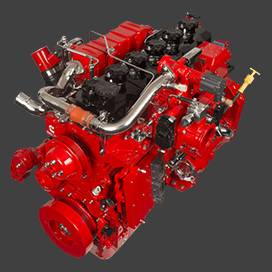Sep . 26, 2024 05:03 Back to list
truck brake drum gauge
Understanding Truck Brake Drum Gauge A Crucial Component for Safe Driving
When it comes to the safe operation of heavy vehicles like trucks, the brakes play a paramount role. Among the myriad components that contribute to an effective braking system, the brake drum gauge is often overlooked. This seemingly simple tool is vital for ensuring that a truck's braking system functions correctly, ultimately safeguarding lives on the road.
The Basics of Brake Drums
Before delving into the significance of the brake drum gauge, it's essential to understand what brake drums are. Brake drums are cylindrical components that house the brake shoes in drum brake systems. When the driver applies the brakes, the brake shoes expand outward against the drum's inner surface, generating friction and slowing down the vehicle. It is the wear on these drums that can severely impact performance, making regular maintenance a necessity.
What is a Brake Drum Gauge?
A brake drum gauge is a specialized tool used to measure the diameter of brake drums. These gauges help determine whether a brake drum has worn down to a point where it needs to be replaced. Typically made of durable materials, the most common designs feature a simple dial or digital readout that indicates the measurement. Technicians use these gauges during vehicle inspections to assess the condition of the brakes effectively.
Importance of Brake Drum Gauges
1. Safety First The primary function of the brake drum gauge is to ensure the vehicle's braking system is in optimal condition. Worn-out drums can lead to decreased braking efficiency, increasing the risk of accidents. By regularly checking the drum's dimensions, drivers and technicians can catch wear early and replace them as needed.
2. Cost-Efficiency While regular maintenance may seem costly at times, the expenses incurred from brake failure or accidents can be significantly higher. Using a brake drum gauge allows for proactive maintenance, avoiding more extensive repairs and ensuring that the truck can operate efficiently. Replacing worn drums before they cause issues can save on both repair costs and downtime.
3. Compliance with Regulations Many jurisdictions have strict regulations regarding the maintenance of heavy vehicles. Using a brake drum gauge helps ensure compliance with these standards, which can prevent fines and keep vehicles roadworthy. Regular inspections paired with accurate measurements contribute to overall fleet safety and reliability.
truck brake drum gauge

4. Improved Performance A well-maintained braking system enhances the performance of a truck. Consistent use of a brake drum gauge can lead to smoother operation, quicker stopping times, and a more enjoyable driving experience. This can be particularly important in the transportation industry, where time and efficiency are often of the essence.
How to Use a Brake Drum Gauge
Using a brake drum gauge is straightforward but requires some knowledge of best practices
1. Preparation Ensure the truck is on a stable surface, and the wheels are chocked to prevent movement. Gather the required tools, including the gauge.
2. Measurement Remove the wheel to access the brake drum if necessary. Position the gauge inside the drum and adjust as needed until it clicks in place. Read the measurement displayed on the gauge.
3. Assessment Compare the reading against the manufacturer's specifications for the brake drum. A drum that has reached the minimum diameter should be replaced immediately.
4. Documentation Keep records of the measurements for future reference, which can help track wear patterns over time and plan for future maintenance.
Conclusion
In the world of trucking, where safety and efficiency are paramount, the brake drum gauge emerges as a hero often unnoticed. It helps ensure that truck braking systems are functioning correctly, thereby preventing accidents and costly repairs. Regular maintenance and use of a brake drum gauge can make a significant difference, guaranteeing safer journeys on the roads. Investing time in understanding and utilizing this important tool is a step toward responsible vehicle management.
-
HINO Industrial Solutions - ¡Ң���ຽ��е��������˾ | Advanced Technology&Reliability
NewsJul.13,2025
-
HINO Industrial Efficiency-Jiangsu Hino Industrial|Productivity Optimization&Cost Reduction
NewsJul.12,2025
-
HINO-¡Ң���ຽ��е��������˾|Advanced Industrial Solutions&Energy Efficiency
NewsJul.12,2025
-
Premium Brake Drum Iveco – Durable Drum Brake Drum & Brake Shoe Solutions
NewsJul.08,2025
-
High-Performance Brake Drum Liza for Enhanced Safety Reliable Drum Brake Drum & Brake Shoe Solutions
NewsJul.08,2025
-
High-Quality Brake Drum MAZ – Durable Drum Brake Drum & Brake Drum and Brake Shoe for Optimal Performance
NewsJul.07,2025
